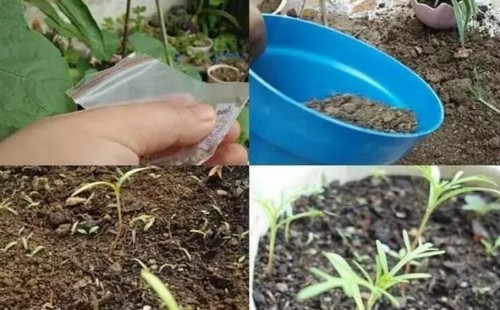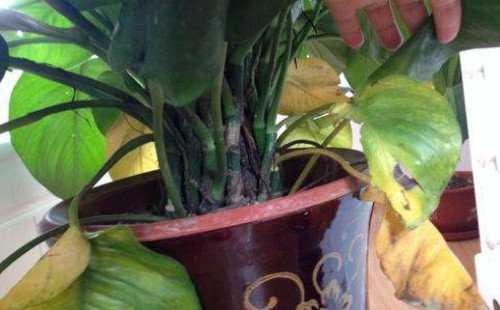Culture methods of Persian chrysanthemum
Persian chrysanthemum is widely used in landscaping because of its large and colorful flowers. Many residential areas and roads will find its beautiful figure, which can be planted in clusters or potted. Persian chrysanthemum planted outdoors is very eye-catching when it blossoms, and even as a family potted plant, it often brings a pleasant feeling to the eyes.

Persian chrysanthemum likes the growth environment with plenty of light, and it is resistant to barren and drought, but it is not resistant to cold, high temperature, fertilizer and waterlogging, so as long as we maintain and manage it according to its growth habits in these aspects, it is easy to bring it into a lovely scene. Next, the editor will share with you the breeding methods of Persian chrysanthemum.
First, basin soil
Although Persian chrysanthemum has the characteristics of resistance to barren, but also like the soft soil environment, especially the need for basin soil with good permeability, because Persian chrysanthemum prefer good drainage soil. And Persian chrysanthemum is more afraid of waterlogging, so the drainage of the basin soil is better, so it is easy to rule out the basin even if it is sometimes overapplied. Therefore, the sandy loam with acidity and good drainage should be selected in the basin soil.
Second, lighting
Persian chrysanthemum is a kind of light-loving plant, which needs sufficient light to promote photosynthesis during the growing period, especially in the flowering period, the more sufficient the light is, the more beautiful the flower is; but as a potted plant, it should be properly shaded under the strong summer light to avoid exposing it to the scorching sun, otherwise it is easy to sunburn the plant, and it should be provided with sufficient light in other seasons. If the light is insufficient, the branches and leaves are easy to grow too long, and the stems and branches that are too long and too thin will lodge because they can not bear their own weight.
Third, temperature
Persian chrysanthemum is not resistant to high temperature and cold, so the temperature should be adjusted reasonably in summer and winter. In general, the growth environment temperature should be kept at 20-30 ℃ in the daytime, while the temperature should not be lower than 10 ℃ at night. The temperature during the growing period should be kept between 8-24 ℃. When the summer temperature exceeds 33 ℃, the plant will stagnate and turn into dormancy, while when the temperature drops below 10 ℃, the plant is prone to decay and death.
Fourth, watering
Persian chrysanthemum is not resistant to water, afraid of stagnant water in the basin, so watering should be appropriate, otherwise it will affect the growth and flowering of the plant. The original spring and autumn season can be watered every 4-5 days; in summer, it can be watered every 3-4 days, and more water can be sprayed to cool and moisturize; as the temperature drops in winter, it is especially necessary to control watering in order to keep the basin soil slightly dry. But exactly when and how to water depends to a large extent on the degree of dryness and wetness of the basin soil.
5. Fertilization
Persian chrysanthemum does not have a great demand for nutrients, so there is no need to apply a large amount of fertilizer deliberately, even if it can be applied properly in the peak growing season, it is not easy to be too much, and the concentration should be low to achieve "thin fertilizer and less fertilizer". As long as the seedlings are planted in the pot, there is no need to apply fertilizer in the later stage. After all, Persian chrysanthemum does not like big water and big fertilizer. Therefore, the topdressing of potted Persian chrysanthemum should be strictly controlled.
Sixth, pick the heart
In order to promote the potted Persian chrysanthemum to sprout more side branches in full plant shape and promote flowering, it is necessary to pick the heart of the plant during the growing period. The first coring is mainly to remove the stem branches at the top of the middle, and in the later stage, multiple coring treatments should be taken according to the plant shape of the plant.
7. Diseases and insects
The main pests of Persian chrysanthemum are aphids and red spiders, which only need to be controlled in time. In order to avoid lodging disease, it is generally only necessary to strictly control water and fertilizer; and generally maintain plant ventilation and light, avoid high-temperature, humid and hot growth environment, can well avoid the breeding of diseases and insect pests.
Time: 2019-05-30 Click:
- Prev

The remedy and solution of the rotten root of the golden diamond
In the previous article, the editor analyzed the main reasons for the rotten roots of the golden diamond, so how to deal with the rotten roots of the golden diamond? Today, the editor will share with you the remedies and solutions of the rotten roots of the golden diamond. As long as everyone's disposal method is correct, not only will the plant be rescued.
- Next

Overwintering temperature of Osmanthus fragrans grafted with tassel
Tassel, also known as April snow, is a relatively rare and precious protected tree species. In summer, trees will be covered with white flowers, such as snow cover, clear and pleasant. Tassel can not only be planted in pots, but also make bonsai stumps, and it is also a high-quality rootstock for grafting sweet-scented osmanthus.
Related
- Fuxing push coffee new agricultural production and marketing class: lack of small-scale processing plants
- Jujube rice field leisure farm deep ploughing Yilan for five years to create a space for organic food and play
- Nongyu Farm-A trial of organic papaya for brave women with advanced technology
- Four points for attention in the prevention and control of diseases and insect pests of edible fungi
- How to add nutrient solution to Edible Fungi
- Is there any good way to control edible fungus mites?
- Open Inoculation Technology of Edible Fungi
- Is there any clever way to use fertilizer for edible fungus in winter?
- What agents are used to kill the pathogens of edible fungi in the mushroom shed?
- Rapid drying of Edible Fungi

